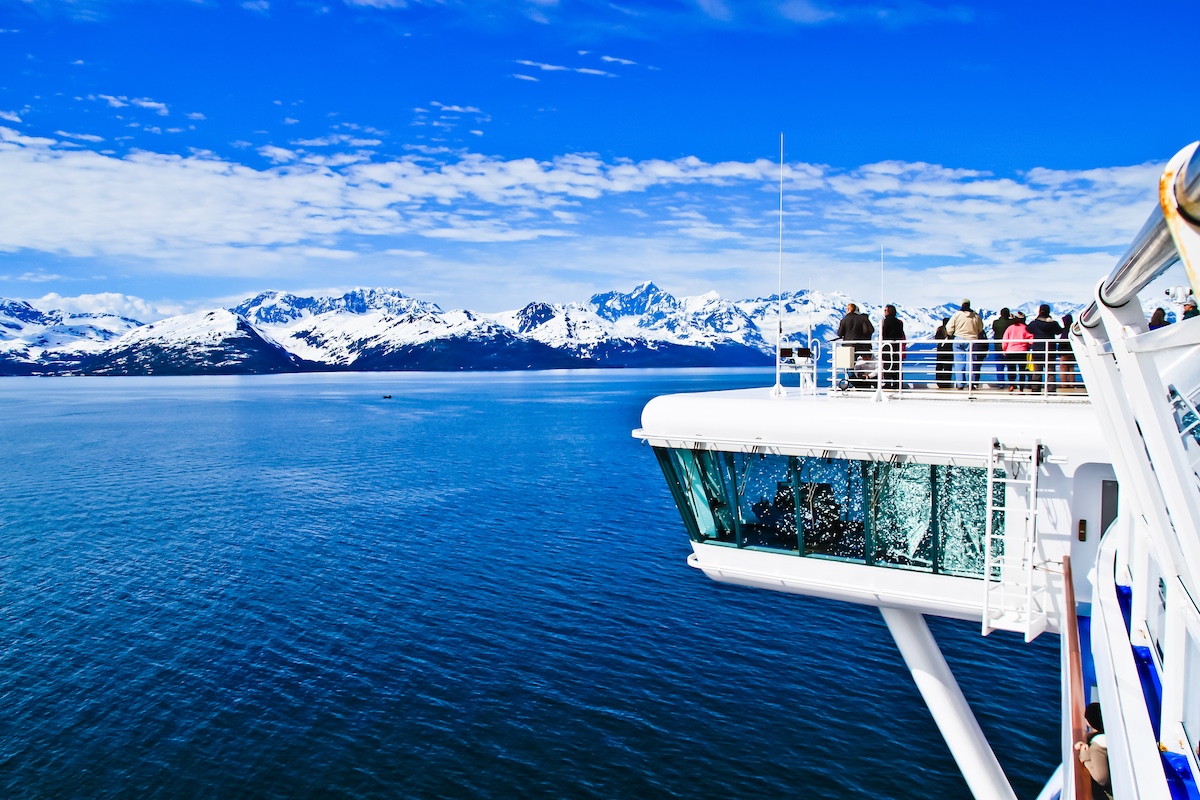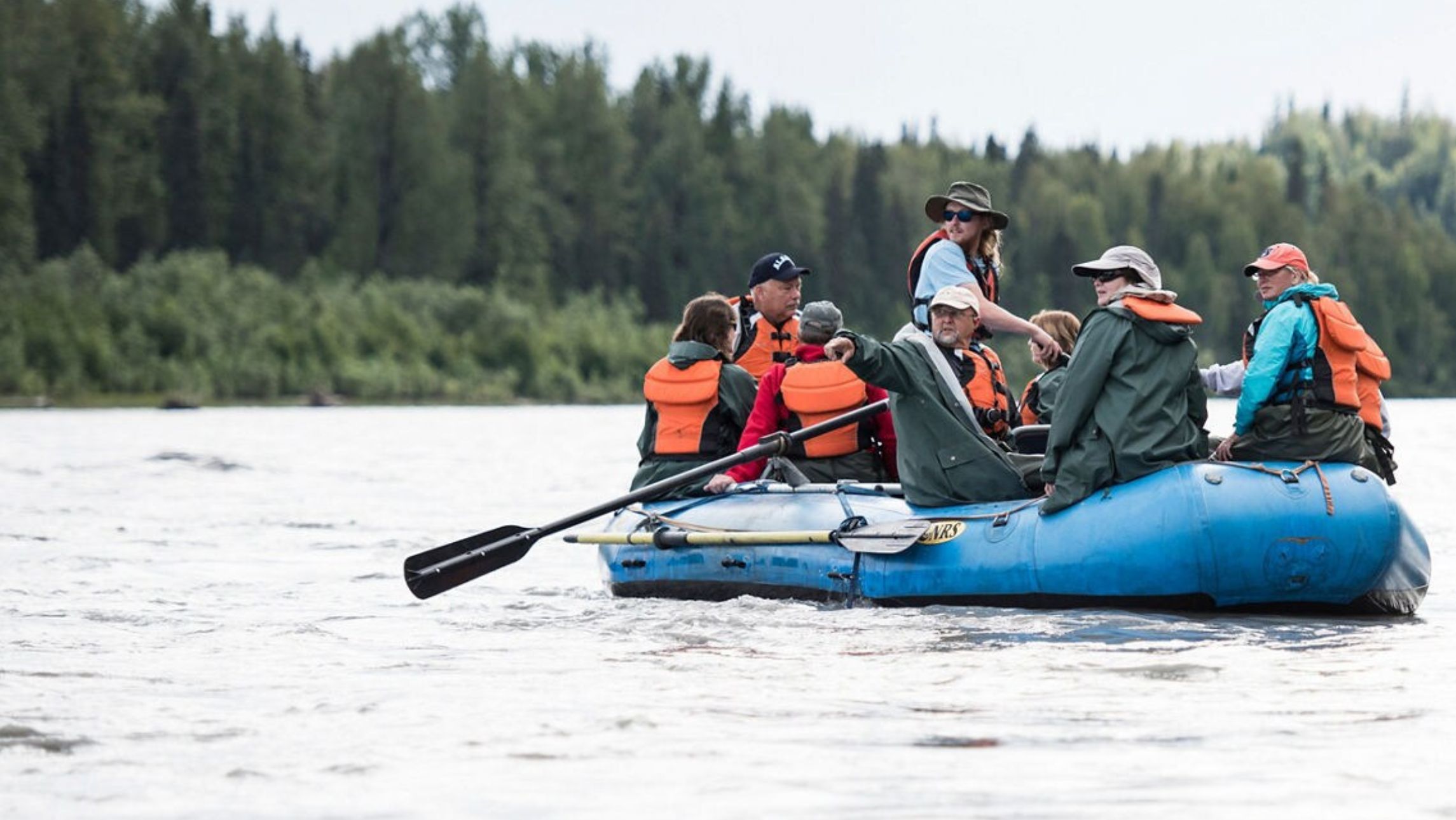Bears, seals, bald eagles and so much more.
There’s nothing in Alaska you won’t love, which is why an Alaska vacation is quickly becoming an Aussie favourite – especially for cruisers.
In addition to its amazing wildlife and gorgeous scenery, Alaska is also home to a Hammer Museum, it holds the record for the second largest earthquake in history and it’s the United States’ northernmost, westernmost and easternmost state!
Adventure cruiser and writer Roderick Eime shared his Alaskan experience in the latest issue of Cruise Passenger magazine, which is out on newsstand today.
Here’s a list of other facts Roderick says you might not know about the exquisite destination.
What’s in a name?
Alaska’s name comes from the Eskimo word Alakshak meaning “great lands” or “peninsula”.
The Kenai Peninsula is a popular landform in the state. It extends over 240 km southwest from the Chugach Mountains. It is separated from the mainland on the east by Prince William Sound and on the west by the Cook Inlet.
Alaska is how big?
With a total land area of 1,723,337 square kilometres, Alaska is the largest state in the US.
It is more than twice the size of Texas, the next largest US state, yet is home to fewer than 800,000 people.
Alaska.org has an interactive page that will allow you to compare your state to Alaska.
The state is the only non-contiguous state (does not share a border or not connected) on continental North America.
Russia’s Neighbour!
Alaska and Russia are less than five kilometres apart at their closest point – between Russia’s Big Diomede Island and Alaska’s Little Diomede Island in the Bering Strait.
Perhaps you are thinking about visiting Russia while you are in Alaska? Well, it is possible to cross borders legally but it should be done outside of a port of call.
Planning your trip is crucial because you have to officially arrive in a Russian port. The nearest official port to the Bering Strait is Providencia, which is in the Far East.
Take note that you can’t take this itinerary on a whim as you need to receive a permission from the Russian government before you can land on Providencia. The process usually takes at least a year.
Don’t plan a road trip
Only 20 percent of Alaska is accessible by road. Despite a landmass of 1.5 million square kilometres, the state has only 12 numbered highways.
Thanks to the TV show Ice Road Truckers, the Dalton Highway became a popular road in Alaska.
The road is a 667-km stretch of dirt and gravel, which originates from the town of Livengood and ends in Prudhoe Bay.
Driving on this road will show the remote wilderness of Alaska, but it is often dangerous even in the summer months.
There are no gas stations, hotels, rest areas, or restaurants along the way.
The highway was built in the 1970s to bring supplies to the oilfield industry in Deadhorse.
If you really want to see Alaska’s wilderness, a safer option is to take the Alaska Railroad, which provides a year-round rail trip throughout Interior and Southcentral Alaska.
More than 500,000 tourists each year take this railroad trip.
Nighttime light shows almost all year-round
One of the hallmarks of an Alaska travel is witnessing the Aurora Borealis.
Also known as the northern lights, this natural spectacle made Fairbanks, Alaska a popular tourist attraction.
The Aurora Borealis is initially caused by the solar wind.
Millions of kilometers away from the Earth’s atmosphere, huge explosions of coronal mass ejections (CMEs) beam charges particles in the sky.
The solar wind penetrates the Earth where they cause the stunning lights that are best seen in Alaska.
There’s no need to plan so much on your time to visit because the northern lights can be seen an average of 243 days a year.
The northern lights can happen any time of the year but are only visible if it’s dark. Thanks to the limited sunlight in Alaska, the lights are visible all year round.
However, nights when there is a full moon is not the best time to witness the northern lights, and there are designated tourist spots in Fairbanks that are perfect because they are away from artificial lights.
The Aurora Borealis is listed among the Seven Natural Wonders of the World alongside Australia’s Great Barrier Reef, Niagara Falls, Victoria Falls, Harbor of Rio de Janeiro, Mt. Everest, and the Grand Canyon.
Don’t wake the bear
Bear viewing is a very popular attraction in Alaska.
You can indulge in this magical experience in Denali National Park, but you may also visit Katmai National Park, Wolverine Creek, and Brooks River Falls.
Just be careful as it is illegal in Alaska to wake a sleeping bear for the purpose of taking a photograph. It is also illegal to whisper in someone’s ear while they are moose hunting.
Glaciers galore
Seeing icy glaciers is a quintessential Alaska cruise experience.
Numbering more than 100,000, Alaska has half of the world’s glaciers. The state’s largest glacier, Malaspina, covers 2,200 square kilometres.
Mendenhall Glacier is One of the most accessible and beautiful glaciers not only in Alaska or North America but in the whole world.
It is just 21 km from the town of Juneau and several minutes away from the Juneau International Airport.
Mendenhall is roughly 800 meters wide and 549 meters deep.
Another popular glacier that you can visit while in Alaska is the Exit Glacier found in the Kenai Fjords National Parks.
And if you can’t get enough of glaciers, you can head on to Glacier Bay National Park and Preserve where you can see the most spectacular tidewater glaciers.
Home to the Kodiak brown bears
Kodiak is Alaska’s largest island and home to the world’s largest bear species – Kodiak brown bears – the only scientifically recognised subspecies of brown bear.
These Alaska native bears are the biggest bears in the world. A male Kodiak bear can reach more than 3.1 meters tall, when on his hind legs and 1.6 meters on all four legs.
They can reach an astonishing 680 kgs. Female Kodiak bears are around 30% lighter and 20% smaller than male bears.
Beyond an interesting bear species, medical researchers especially NASA scientists are studying the denning physiology of Kodiak bears.
Researchers are interested to know how these bears are able to sleep for as long as eight months without eating or defecating and are still healthy when they awaken.
Unlocking this mystery can help patients who need to stay in bed for a vert long time or NASA astronauts during long space flights.
White Fang has all the views
While many movies set in Alaska were not actually filmed there, the 1991 Disney movie White Fang, starring Ethan Hawke was filmed in and around Haines.
Nonetheless, the film brought around $2.6 million revenue to the town, and a local museum was established to preserve the memory.
The Sheldon Museum and Cultural Center holds exhibits that showcase memorabilia about White Fang.
Have you been to Alaska or are you planning a trip to Alaska soon? Let us know in the comments!








